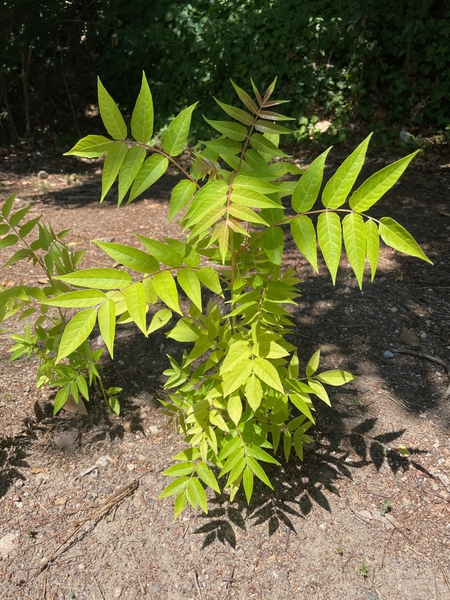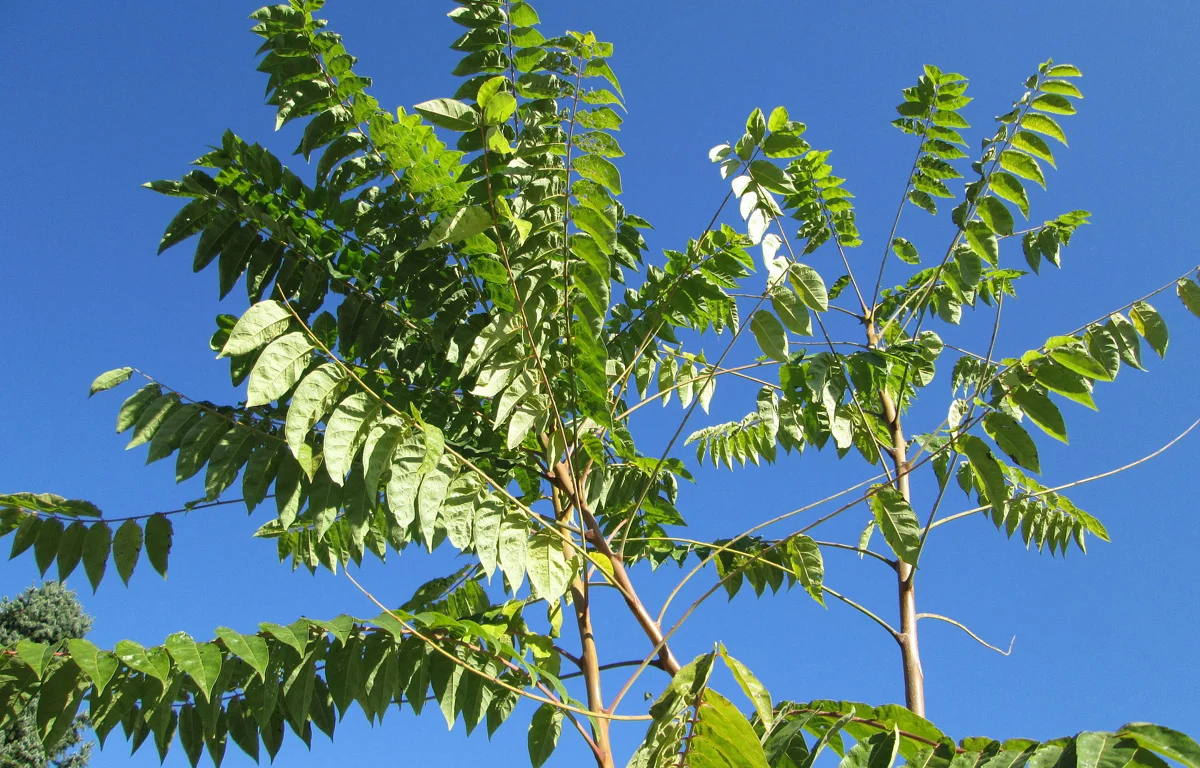Considered invasive in the Pacific Northwest because of its aggressive growth and ability to outcompete native plants, the Tree of Heaven is spreading fast south of Mission St.
This tree originates from China but has been introduced to many parts of the world, including North America, as an ornamental plant. It is highly adaptable to a wide range of environmental conditions and can grow in areas with poor soil, drought, and high pollution.

Its dense stands shade out smaller plants, while chemicals produced by the tree inhibits the growth of any nearby plants. This reduces the diversity of plant species in the area.
The female tree produces up to 300.000 (clusters of) seeds, with papery wings, that are dispersed by wind. But the tree also reproduces asexually through root sprouting. A phenomenon easily witnessed by cutting down the trunk, after which the remaining roots aggressively sprout upwards.
Especially problematic in residential neighborhoods is the smell. Male plants emit a foul-smelling odor while flowering to attract pollinating insects. When damaged, the tree emits what is described as “the smell of dirty socks”. This is a good way to identify the species.
Overall, the invasive nature of the Tree of Heaven can have negative impacts on the ecosystem and livability of an area, as it can displace native plants, reduce biodiversity, and alter the habitat of local wildlife.
SESNA is coordinating with the City of Salem on the best approach to tackle this threat.
